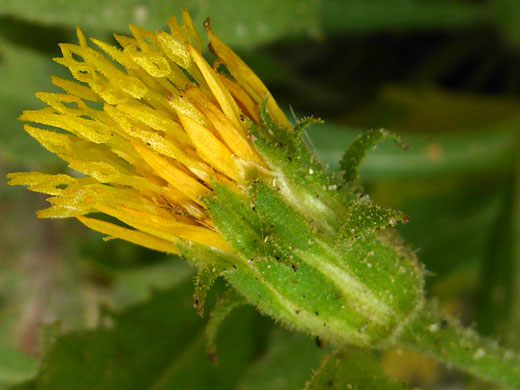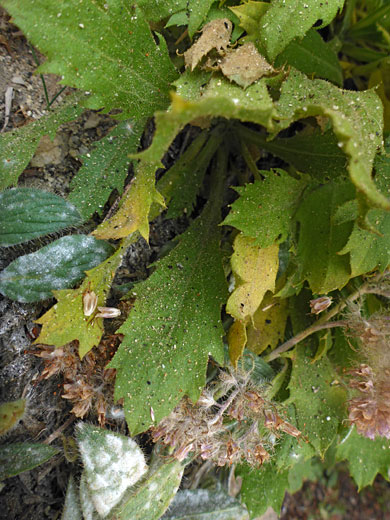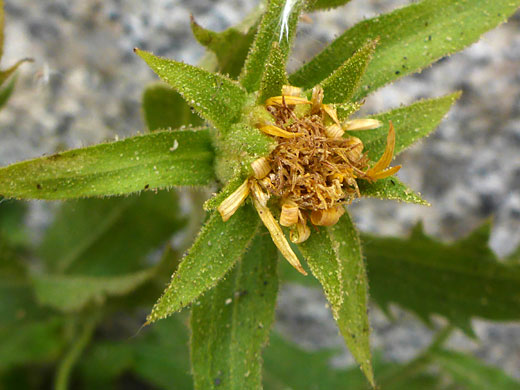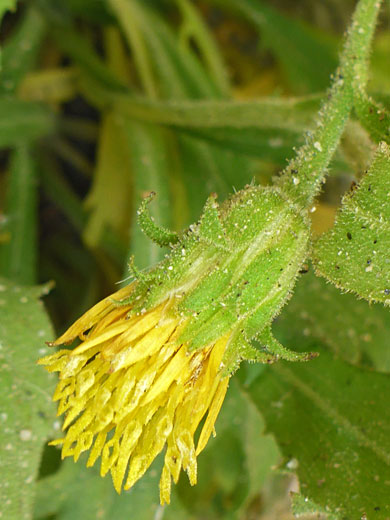Common names:
Whitney's goldenbush, Whitney's bristleweed
Family:
Scientific name:
Hazardia whitneyi
Synonym:
Adeia whitneyi
Main flower color:
Range:
California and southern Oregon
Height:
Up to 20 inches
Habitat:
Open coniferous woodland, from 3,300 to 11,500 feet
Leaves:
Oblong to oblanceolate, up to 2 inches long, pointed at the tip, lined by large, sharp teeth
Season:
July to September
Leaves of hazardia whitneyi, or adeia whitneyi, are quite distinctive, being holly-shaped in outline; oblong to broadly oblanceolate, lined by sharp, well separated teeth. Leaf surfaces are rough in texture, tapering at the base, and glandular towards the tips. Leaves are stemless.
Flowerheads are single, held in open clusters on thick stalks. The bell-shaped involucre is lined by glandular, lanceolate, pointed-tipped phyllaries, often recurved. The narrow yellow ray florets number zero (var discoidea, in Oregon and northern California) or from five to 18 (var whitneyi, in the Sierra Nevada). There are between 15 and 30 orange-yellow disc florets, the corollas around a third of an inch long, slightly shorter than the ray corollas.
Flowerheads are single, held in open clusters on thick stalks. The bell-shaped involucre is lined by glandular, lanceolate, pointed-tipped phyllaries, often recurved. The narrow yellow ray florets number zero (var discoidea, in Oregon and northern California) or from five to 18 (var whitneyi, in the Sierra Nevada). There are between 15 and 30 orange-yellow disc florets, the corollas around a third of an inch long, slightly shorter than the ray corollas.
All Contents © Copyright The American Southwest | Comments and Questions | Contribute | Site Map




